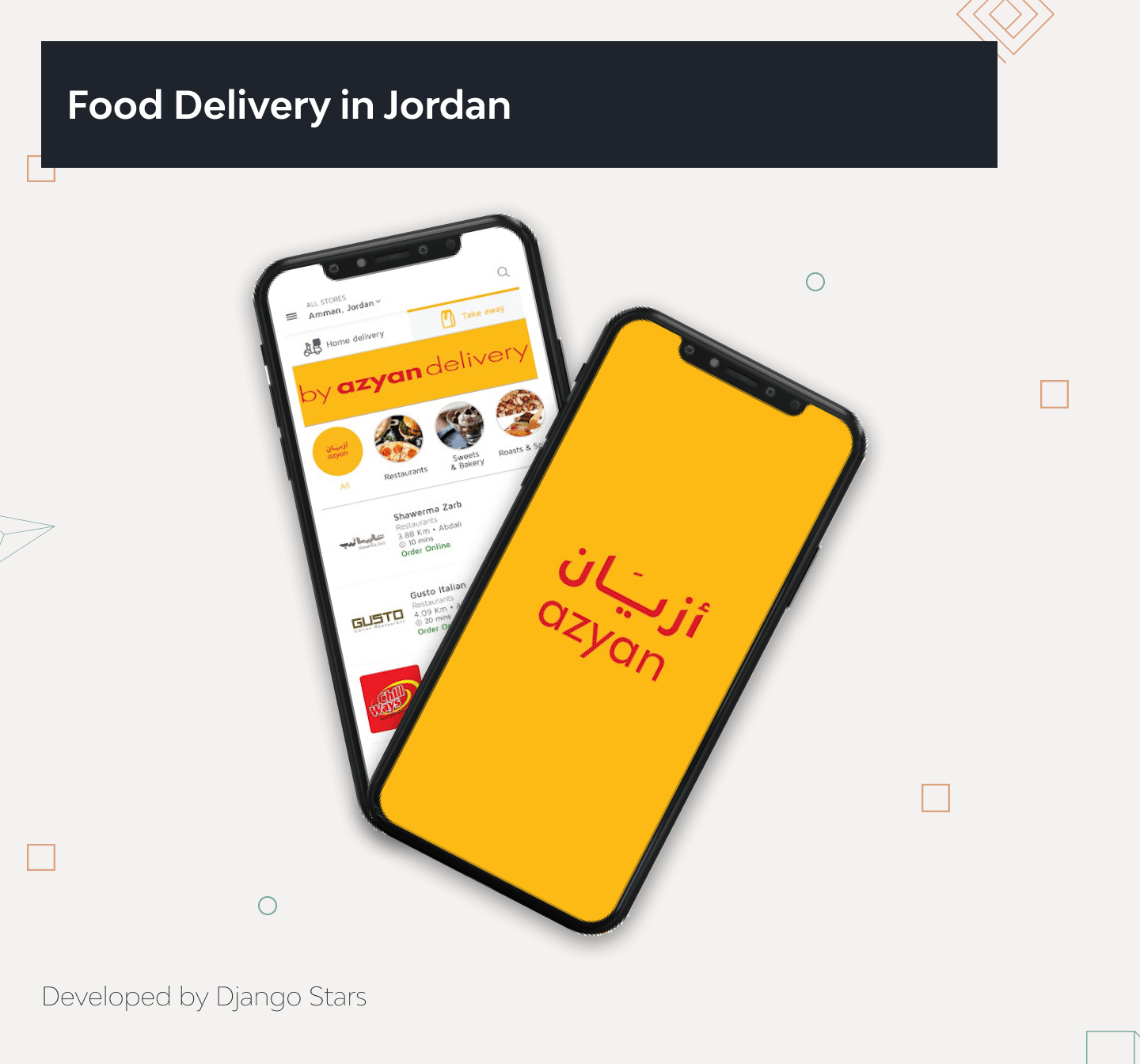Why Is Real-Time Tracking the Future of Logistics?
As per Facts & Factors, the global logistics market, valued at USD 4.09 billion in 2022, is set to leap to an impressive USD 12.09 billion by 2030, a CAGR of 17.1%. That isn’t solely the work of giants like Amazon or FedEx. Technologies like integrated logistics management tools are steering this growth.
Real-time logistics tracking is making waves across sectors. It fine-tunes Amazon’s vast delivery network, keeps Walmart’s inventory robust, enriches your Uber Eats experience, and even helps hospitals track critical assets. That isn’t a glimpse of the future — it’s happening now.
From retailers to healthcare providers and even 3PL shippers, logistics tracking is enhancing visibility, boosting customer satisfaction, and reshaping operational efficiency. Harnessing logistics real-time analytics empowers organizations to make data-driven decisions swiftly and confidently.
What is real-time tracking in logistics?
Real-time tracking in logistics enables constant updated monitoring of warehouse goods, fleet vehicles, and any assets moving through the supply chain with the help of tech like:
- IoT sensors and telematics — GPS for location, speed, and fuel tracking; RFID for tracking goods; other sensors for reading temperature and vibration, etc.
- Cloud platforms — digital “hubs” that employees and managers can use to access and collect all data readings.
- Data analytics — ML/AI algorithms, as well as techniques like NLP and Computer Vision, are employed for smart aggregation, sorting, and processing of data (as well as using it for predictions or route optimization).
With real-time tracking in logistics, delivery companies of any scale can instantly capture and transmit data about the exact location, condition, and status of shipments. That is simply impossible to achieve with outdated manual methods, where entire batches of goods are inventoried at fixed checkpoints.
The importance of real-time logistics tracking
Real-time tracking in logistics has become essential for efficient, competitive supply chains for several reasons.
E-commerce demands transparency
Today’s e-commerce customers expect more than just “your order has shipped.” They want precise, live updates on where their package is and when it will arrive. Real-time tracking gives just that transparency, reducing customer anxiety (and support calls), and boosting trust in the delivery process.
Disruptions highlight the need for visibility
Supply chains are easily exposed to disruptions that can undermine shipments at any moment — from weather to geopolitical risks. Real-time logistics analytics helps detect anomalies and immediately respond to issues by rerouting vehicles or reallocating resources.
Competitive edge through trust and speed
With more data insights and process transparency, a company can fine-tune the accuracy and reliability of deliveries. But more importantly than that, keeping customers well-informed on all delivery milestones strengthens trusting relationships with them.
Pivotal benefits of real-time tracking in logistics
End-to-end visibility
Real-time tracking in logistics enables a full view across the entire logistics chain — from factory floor to customer doorstep, making logistics managers’ work simpler and more efficient, spotting issues.
Operational efficiency
With instant data updates on vehicle location, shipment status, and environmental conditions, logistics teams can dynamically optimize routes, reassign tasks, and reduce idle time.
Risk mitigation
Real-time logistics tracking helps get risks under control — you can track route deviations, delays, and temperature breaches for sensitive goods, setting up custom alerts that trigger rerouting, notifications, etc.
Customer experience
Transparency is fundamental to customer satisfaction, and logistics tracking helps double down on it with instant ETA updates, exception alerts, and omnichannel customer information.
Cost savings
Real-time tracking in logistics allows lowering costs across the essential aspects — cutting fuel waste through routing, eliminating stockouts, and avoiding damaged/delayed shipments through tracking.
AI and Machine Learning integration
With AI/ML solutions for real-time analytics, logistics can benefit from in-depth anomaly and risk detection in shipments, forecasts of demand and maintenance needs, and prescriptive algorithms.
Real-time tracking applications: A Wide spectrum of usage
The power of real-time tracking is not confined to the realm of logistics. Its versatility and utility extend to various sectors, leaving a mark on many facets of our daily lives.
E-commerce behemoths like Amazon and Walmart have set the standard by implementing real-time tracking. By allowing customers to track their orders from the point of purchase to doorstep delivery, they have redefined customer experience and set new trends in the industry.
The impact of real-time tracking is also evident in food delivery services like Uber Eats, DoorDash, and Grubhub. These apps enable customers to track their orders as they move from the restaurant to their doorstep. Such transparency doesn’t just inform, but it also reassures customers about their order’s status and timing.
On the transportation front, rideshare apps like Uber and Lyft are capitalizing on real-time vehicle tracking. Riders can see their drivers’ live locations, get precise ETAs, and map out the best routes. This feature not only saves time but also adds a layer of safety, trust, and transparency to the user experience.
Challenges in real-time logistics tracking and how to overcome them
Many enhancements can be achieved through real-time monitoring of logistics. But to reap all the benefits, you must also be ready to take on these challenges.
High initial costs
You’ll need to invest a good penny upfront in IoT sensors, telematics, and cloud platforms.
If the budget is limited, it’s best to deploy real-time logistics analytics in phases, see which implementations bring more ROI, and scale them.
Data integration and interoperability
Logistics networks come in different shapes and multiple formats — ERP, TMS, WMS. Sometimes, with undisclosed data formats or protocols.
To make interoperability easier, use open APIs, data standardization frameworks, and integration platforms that help unify data (e.g., in the cloud).
Data security and privacy
A lot of internal data is transmitted during real-time tracking in logistics, including business locations and metrics.
You must thoroughly encrypt all data, pass it only through secure APIs, and enable role-based access.
Scalability
You will need to track more vehicles, sensors, and data over time, which can become complex and expensive.
You can stay scalable with the right tech — cloud infrastructures, edge computing, and AI data analytics.
Navigating logistics management with tailored software solutions
E-commerce businesses find themselves in various logistical environments. Each has unique requirements for managing operations.
Let’s explore some software types or logistics products crafted for e-commerce enterprises:
Customer Relationship Management (CRM) systems
CRM systems serve as a central hub, offering control over delivery across all coordination chain stages. They assign tasks to pertinent staff automatically and unify essential tools in one interface. As such, CRM systems integrate with other company programs, allowing effective strategy planning using exact analytical data.
When creating a CRM system to streamline logistics, we take into account all specific operations. This attention to detail elevates the effectiveness of custom-built logistics software development solutions compared to pre-existing ones.
Warehouse Automation & Coordination Software: the software mentioned is an asset for logistics optimization. It simplifies the recording, management, and distribution of inventory, assisting in an effective delivery process. These systems often link customer satisfaction with the company’s logistics tracking, enhancing efficiency.
App for drivers
Typically installed on smartphones, these apps are an essential part of coordination management software. They provide drivers with optimal route organization, document handling, and vehicle maintenance information.
E-Commerce logistics management software
These real-time tracking systems in logistics are custom-built to optimize logistics operations for e-commerce companies. They store details about cargo, customers, warehouses, fleets, drivers, and transport schedules, offering an all-in-one solution for efficient logistics management.
Also, real-time analytics for logistics empowers logistics managers to optimize warehouse operations by monitoring storage capacity and demand fluctuations in real-time.
Real-time tracking is no longer a luxury but a necessity in the modern logistics industry. It provides much-needed transparency, optimizes route efficiency, enhances customer service, and ultimately, drives cost savings. However, implementing real-time tracking requires careful planning and a comprehensive understanding of costs.
5 steps to implement real-time logistics analytics
Step 1: Identifying the need
Start by pinpointing your business needs. Suppose your company frequently experiences late deliveries because of inefficient routing. In that case, your goal may be to enhance delivery efficiency.
Or, if you face challenges in keeping customers informed about their delivery status, improving customer communication might be your insight. Every business will have unique needs that should guide your tracking solution’s design.
Step 2: Technology assessment
You’ll need to understand the core technologies involved in real-time tracking. GPS devices, for instance, track vehicle locations with accuracy within meters. IoT sensors collect data such as vehicle speed, fuel level, and engine status, giving you a detailed understanding of fleet performance.
Software platforms analyze and visualize this data in user-friendly formats, enabling your team to make informed decisions quickly. Research these technologies and how they can be configured to meet your specific needs.
Step 3: Vendor selection
Identifying a reliable vendor is the next step. You might choose a company known for its comprehensive real-time fleet tracking solutions. Consider the vendor’s technical expertise, industry reputation, pricing, and alignment with your needs.
Ask for case studies or client references to get a sense of how they’ve performed in past real-time logistics solutions similar to yours.
Step 4: Integration and testing
After selecting a vendor, it’s time for integration and testing. This phase involves connecting the tracking system to your existing IT infrastructure, like your Enterprise Resource Planning (ERP) or Customer Relationship Management (CRM) systems.
Testing is then conducted to ensure seamless data flow between systems. For instance, vehicle location data should be accurately reflected in your ERP system, and any technical glitches must be ironed out promptly.
Step 5: Training and deployment
Once testing is successful, move on to training and deployment. Your vendor should provide training sessions for your staff, ensuring they understand how to operate the system. They might use a dashboard to view real-time vehicle locations, analyze fuel efficiency trends, or monitor vehicle maintenance schedules.
After all the users are comfortable with the system, it’s then rolled out across your business. Effective user adoption is crucial for your new system’s success.
Cost estimation: DIY vs outsourcing
Implementing real-time tracking isn’t without its costs. If you choose to do it yourself (DIY), your direct costs will include:
- Hardware Costs. The costs of GPS devices and other necessary IoT devices — $10–$500+ per device;
- Software Costs. The costs of purchasing and licensing software platforms for data analysis and visualization — $1–$5+ per device a month;
- Implementation Costs. The costs of your time or your team’s time to implement the system — $8,000–$25,000+ in total;
- Maintenance Costs. The costs associated with updating and maintaining the software and hardware — $1–$10 per device a month.
Choosing to outsource your real-time tracking implementation involves different costs:
- Development Costs. Including costs of developing a custom tracking solution that meets your specific needs — $30,000–$65,000+ in total;
- Integration Costs. Including the costs of integrating the tracking system into your existing operations — may vary greatly depending on the number and type of systems;
- Maintenance and Support Costs. Including the costs of ongoing maintenance and support provided by the outsourcing company — $1,500–$3,000+, depending on many factors.
| DIY (In-house) | $10,000–$80,000+ initial |
| Vendor (Outsourcing) | $30,000–$65,000, with more ROI guarantees |
When calculating the costs of DIY vs. outsourcing, you should consider not only the immediate costs but also the long-term costs and benefits. Outsourcing can often provide better value for money as it allows you to leverage the expertise of a specialist company. Moreover, it can free up your time and resources to focus on your core business activities.
Django Stars: Unleashing the power of real-time tracking
Django Stars is an outsourcing logistics software development partner that specializes in creating custom, user-friendly real-time tracking solutions. We have a profound understanding of the logistics industry challenges. We are equipped with the necessary skills and expertise to develop effective solutions.
Our partnerships speak volumes about our capabilities. A collaboration with a U.S. logistics company led to improvements in their logistics and real-time visibility, operational efficiency, and a significant reduction in transportation costs. Our partnership with a Jordanian food delivery service hinged on real-time tracking to bolster customer satisfaction and business growth.
Case study 1: U.S. logistics company
Our partnership with a leading U.S. logistics company stands out at Django Stars. This company had a complex problem. They were struggling to manage orders across different locations. These locations included restaurants, physical addresses, and hubs. We offered a solution: real-time logistics data tracking.
We used our advanced GPS tracking and software system for this task. This integration gave supply officers real-time access to crucial information. They could see order receipts, the status of raw materials, shipping details, and regulatory data. The status of orders was also visible in real time.
This new level of real-time visibility in logistics had a big impact. Processes that were once difficult to manage became clearer and more efficient. The company could now precisely plan, schedule, and monitor their logistics. This clarity reduced uncertainties and improved decision-making.
Operational efficiency and productivity saw a significant increase. Transparency improved customer satisfaction. Logistical efficiency led to reduced transportation costs. The company also gained a competitive edge in the challenging logistics industry. This success story shows the power of real-time tracking.
Case study 2: Food delivery in Jordan
Django Stars is proud of its ability to adapt. We proved this in our partnership with Azyan. Azyan is a food delivery service based in Jordan. They’re known for their fast deliveries from restaurants and shops.
We started our journey with Azyan on a small scale. We provided one expert to assist them in the pre-development stage. Over time, our involvement grew. We expanded our team to include eight experts. Azyan decided to delegate all technical work to our team. They chose to focus on their core business expertise.
Why did Azyan choose Django Stars? We’re known for combining business vision with cutting-edge technology. We used our strengths in web and mobile solutions to support Azyan’s operations. Our work ensured their platform could scale up to support their growth plans.With our help, Azyan streamlined its processes. Their service became more reliable. As a result, they set a new standard for food delivery in Jordan. This partnership reflects our commitment to using technology for business growth and customer satisfaction.
Future of real-time tracking in logistics
Internet of Things (IoT)
IoT will continue to drive real-time tracking in logistics, but as sensor costs drop and connectivity improves up to 5G, more assets will be managed at lower expenses.
Artificial Intelligence (AI) and Machine Learning (ML)
The role of AI and ML will grow in analytics for logistics, with smarter predictive models and ultra-personalized prescriptive systems recommending best responses to contextual issues.
Blockchain technology
Blockchain will become more embedded, enabling decentralized data logging, immutable records of checkpoints and transactions, and reinforced supply chain cybersecurity.
Drones and autonomous vehicles
Automated delivery vehicles and drones will leverage more real-time monitoring features for optimized navigation and flexible coordination via onboard sensors and telemetry feeds.
Satellite technology
Satellite-based tracking will become more important for long-haul logistics, feeding logistics real-time analytics via extraterrestrial telemetry.
Conclusion: Embracing the power of real-time tracking
Real-time tracking in the logistics industry is a strategic asset that enhances operational efficiency, drives cost savings, and enriches the customer experience. When combined with last-mile delivery management software, real-time analytics provide end-to-end visibility and transparency, enabling better coordination between suppliers, manufacturers, and distributors.
Partnering with Django Stars allows you to harness this technology and position your business to thrive in the fast-evolving logistics landscape.
Implementing real-time tracking in your logistics operations is a strategic investment that can deliver significant benefits. By understanding the steps involved in implementation and the associated costs, you can make an informed decision that best serves your business needs.
- Why is real-time tracking vital in logistics?
- Real-time tracking is indispensable in logistics due to its ability to provide enhanced transparency, improved efficiency, and significant cost savings. It enriches customer experience, making it a critical asset in the logistics industry.
- How does real-time tracking work?
- Real-time tracking in logistics is a full, dynamic visualization of processes, fleets, and shipments enabled by gathering data from GPS trackers, RFID tags, or IoT sensors. All are connected to a custom network, which you can monitor and manage instantly via a dashboard or app.
- How does real-time tracking enhance customer experience?
- By giving customers the ability to follow their orders in real-time, they feel reassured and are less anxious about their order's whereabouts. This contributes to customer satisfaction.
- What role do AI and Machine Learning play in real-time tracking?
- AI and Machine Learning underpin predictive logistics real-time analytics. They expect potential disruptions, suggest alternative routes, and predict maintenance needs before they become problematic. This enhances the efficiency and effectiveness of the tracking system.
- Is real-time tracking suitable for small logistics businesses?
- Yes, real-time monitoring can be very useful even for small logistics operations. Although the initial investment in hardware, integrations, and software may be significant, the benefits you get in return (e.g., route optimization, fuel savings, and fewer delays and losses) can easily pay off over time.









